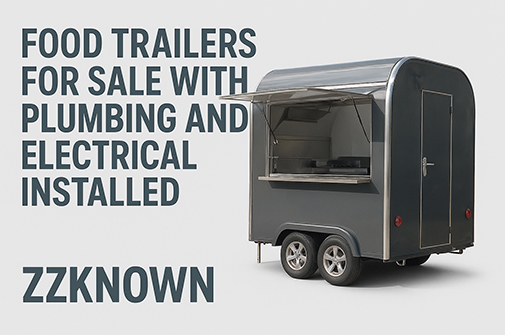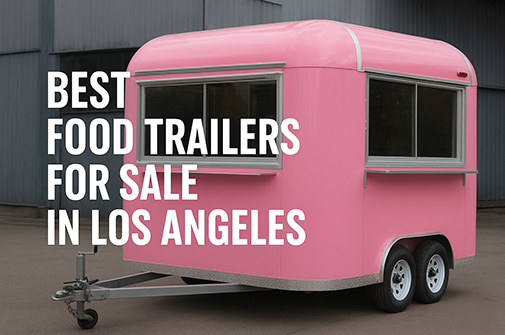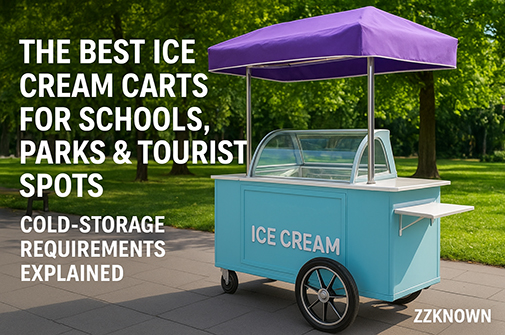The aroma of slow-smoked meats, the tantalizing flavors of expertly crafted sauces, and the convenience of a meal on the go have fueled a significant surge in the popularity of barbecue. Simultaneously, the food truck industry has blossomed, offering entrepreneurs a dynamic and often more accessible entry point into the culinary world compared to traditional brick-and-mortar restaurants. This convergence has led to a vibrant landscape of mobile BBQ businesses, where innovation and quality meet the road. The advantages of operating a mobile BBQ venture are numerous, including lower overhead costs associated with rent and utilities, the inherent flexibility to cater to diverse locations and events, and the opportunity for direct interaction with customers, fostering a loyal following.
However, simply having a truck and a smoker is not a guaranteed recipe for success. A crucial element that often distinguishes thriving BBQ food trucks from those that struggle is the thoughtful and strategic design of the mobile kitchen itself. A well-designed food truck transcends its function as merely a cooking space on wheels; it becomes a vital tool for maximizing operational efficiency, powerfully representing the brand, and ultimately ensuring customer satisfaction, which directly impacts profitability. This report will explore the critical aspects of BBQ food truck design, demonstrating through detailed analysis and industry insights how meticulous planning and informed choices regarding layout, equipment, and branding can significantly determine the level of business success achieved in this competitive and exciting industry.
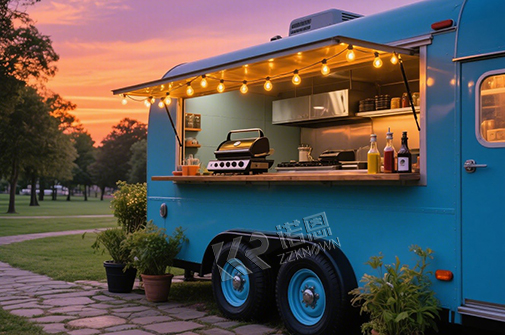
Before even considering the physical design of a BBQ food truck, a prospective owner must first establish a clear understanding of the fundamental aspects of their business. This foundational work will inform every subsequent decision regarding the truck's layout and features.
Identifying the ideal customer is the initial step in this process. Understanding their preferences for specific BBQ styles, their typical price point expectations, and the kind of overall dining experience they seek will guide menu development and influence the truck's design. For instance, are you aiming to serve a lunch crowd in a bustling business district, where speed and convenience are paramount? Or are you targeting weekend festivals and community events, where customers might be looking for a more leisurely and indulgent BBQ experience? Considering local demographics, the types of events prevalent in your operating area, and potential opportunities for private catering will further refine your understanding of your target market and allow you to tailor your offerings and truck design accordingly. A deep understanding of these factors will dictate not only the menu but also the specific features needed in the food truck to cater to the unique needs and preferences of your intended clientele. For example, a BBQ food truck aiming for the late-night bar crowd might prioritize easy-to-eat handheld items and a service window accessible in dimly lit conditions, while a truck focusing on catering events might need ample holding capacity and a sophisticated aesthetic.
The core of any BBQ food truck is, of course, the food it serves. Clearly specifying your core BBQ menu items, such as particular cuts of meat (e.g., brisket, ribs, pulled pork), the specific smoking techniques you will employ (e.g., using hickory, mesquite, or oak), and any signature sauces or rubs that will define your brand is essential. Additionally, you need to consider any complementary side dishes (e.g., coleslaw, baked beans, potato salad) and beverages that will round out your offerings. Once your menu is defined, the next critical step is to create a comprehensive list of all the essential cooking equipment required to prepare each item. This list will likely include a high-quality smoker or grill, and depending on your menu, could also encompass ovens, fryers, steam tables, and various specialized tools. Furthermore, accurately estimating the necessary prep space for tasks like chopping vegetables, marinating meats, and assembling dishes is crucial for efficient workflow. The complexity and variety of your menu directly influence the type and size of equipment needed, which in turn will be a major determinant of the layout and overall dimensions of your BBQ food truck. A menu centered around slow-smoked brisket will necessitate a large, specialized smoker, whereas a menu featuring fried chicken alongside BBQ might require a commercial-grade fryer and an appropriate ventilation system.
Finally, defining your operational strategy will have significant implications for your food truck's design. You need to decide whether your primary focus will be on operating at fixed locations with high foot traffic, regularly participating in various community events and festivals, offering private catering services for parties and corporate events, or a combination of these approaches. Consider the typical volume of customers you anticipate serving during peak hours and the level of speed required to provide satisfactory service. Your operational strategy will directly impact the required storage capacity for ingredients and supplies, the necessity for specific features like a large and easily accessible serving window or perhaps multiple service points to handle high demand, and the overall flow of operations within the confines of the truck. For instance, a BBQ food truck primarily intended for catering events might require more insulated holding equipment to keep food warm during transport and service, while a truck that operates at busy public events will likely need a layout specifically optimized for rapid order fulfillment and efficient customer interaction.
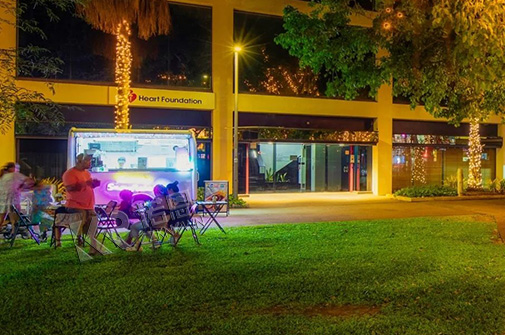
With a clear understanding of your target market, menu, and operational strategy, you can now turn your attention to the crucial task of designing an efficient and functional layout for your BBQ food truck. This stage involves several key considerations that will ultimately determine how smoothly your mobile kitchen operates.
The size of your BBQ food truck or trailer is a fundamental decision that will impact every aspect of your operation. You need to carefully analyze the relationship between your defined menu, the comprehensive list of necessary equipment, and the appropriate overall size of the mobile unit. It's a balancing act between ensuring you have sufficient interior workspace to operate comfortably and efficiently and the practical considerations of vehicle maneuverability, parking availability at your intended service locations, and any local regulations that might impose restrictions on vehicle size. BBQ trailers can range significantly in size, from smaller, more agile units around 16 feet in length to larger, more expansive models reaching up to 26 feet or even longer. Selecting the optimal size involves a critical trade-off: while a larger truck offers more room for extensive equipment, increased staff, and greater storage, it might be more challenging to navigate in crowded urban environments or fit into smaller event spaces. Conversely, a smaller truck might offer superior mobility and lower initial cost but could limit your menu options and the volume of customers you can serve efficiently.
Once you have a general idea of the size of your BBQ food truck, the next step is to meticulously plan the interior layout to create a logical and efficient workflow. This involves mapping out the step-by-step process of preparing your most popular BBQ dishes, starting from the moment raw ingredients are brought onto the truck all the way to the final serving of the finished product. Consider the typical sequence of actions involved in making your signature pulled pork sandwich, for example: retrieving the pork shoulder from refrigeration, preparing it with a rub, placing it in the smoker, holding it at temperature after smoking, pulling the pork, and finally assembling the sandwich with sauce and sides. With this process in mind, you should arrange your equipment and workstations in a linear or circular flow that minimizes unnecessary movement for your staff and eliminates potential bottlenecks, especially during peak service hours. A well-planned workflow is essential for maximizing the speed and efficiency of your operations, reducing wait times for your hungry customers, and ultimately improving the productivity of your staff. For instance, strategically placing the smoker near the initial meat preparation area, and positioning the serving window close to the final plating station, can significantly streamline the entire food preparation and delivery process.
To further enhance efficiency and organization, it is crucial to divide the interior space of your BBQ food truck into distinct zones, each dedicated to a specific function. Common zones include a dedicated cooking area housing your smokers and grills, a preparation area equipped with counters and sinks for food prep, a serving area with service windows and your point-of-sale (POS) system, and a cleaning area with sinks for dishwashing and designated waste disposal. Ensuring adequate physical separation between these zones is vital to prevent cross-contamination of food, maintain a clean and sanitary workspace, and comply with health regulations. Proper zoning not only enhances food safety but also improves overall organization within the often-confined space of a food truck, allowing multiple staff members to work simultaneously without impeding each other's tasks. For example, having a dedicated handwashing sink located away from food preparation surfaces, and implementing separate storage solutions for raw and cooked ingredients, are fundamental for maintaining high standards of hygiene and preventing the spread of bacteria.
Given the limited square footage within a food truck, implementing creative and efficient storage solutions is absolutely critical. You need to think vertically, utilizing every available space, including installing sturdy overhead shelves for storing dry goods and paper supplies, incorporating under-counter cabinets for frequently used items, and considering specialized organizers for utensils and smaller equipment. Careful planning is required for both dry storage, which will house items like spices, seasonings, napkins, and to-go containers, and refrigerated storage, which will be necessary for safely storing meats, produce, dairy products, and any other perishable ingredients based on your menu and anticipated inventory levels. Efficient storage is paramount in the confined environment of a BBQ food truck to ensure that all ingredients and supplies are kept organized, are easily accessible to your staff when needed, and ultimately contribute to maximizing the amount of usable workspace available for food preparation and service. Utilizing vertical space with well-designed shelving units and installing slide-out drawers in cabinets can significantly increase your storage capacity without taking up valuable floor space, thereby contributing to a more functional and less cluttered mobile kitchen.
.png)
The right equipment is the backbone of any successful BBQ food truck operation. Investing in quality, commercial-grade appliances that are appropriately sized for your space and menu is crucial for efficiency, food quality, and ultimately, business success.
At the heart of any BBQ food truck is the smoker or grill. Choosing the right type is a pivotal decision that will significantly impact the flavor profile of your BBQ, your cooking capacity, and the overall efficiency of your operation. There are various types of smokers to consider, including offset smokers known for their traditional smoky flavor, vertical smokers that offer a smaller footprint, and pellet smokers that provide ease of use and consistent temperatures. Similarly, grills can range from traditional charcoal grills that impart a distinct flavor to convenient gas grills and even wood-fired grills for a unique touch. When making your selection, carefully evaluate your desired flavor profile, the volume of food you anticipate cooking during peak hours, and the ease of use and maintenance associated with each type of smoker or grill. It is also important to consider the size and capacity of the unit in relation to your menu and the expected customer demand. The choice of smoker or grill is arguably the most important equipment decision for a BBQ food truck, as it directly influences the authenticity and quality of your signature dishes. Different types of smokers will impart unique smoky nuances to your meats, and the cooking capacity will determine how many customers you can effectively serve during busy periods.
Reliable and energy-efficient commercial refrigeration is another non-negotiable investment for a BBQ food truck. Proper refrigeration is essential for maintaining food safety by keeping perishable ingredients at safe temperatures and for preserving the quality of your inventory, thereby minimizing waste. You will need to consider both refrigerators for storing fresh ingredients and freezers for items that need to be kept frozen. Given the space constraints of a food truck, explore space-saving options such as undercounter refrigeration units that can double as work surfaces or taller, narrower vertical reach-in refrigerators that maximize storage without taking up too much floor space. Adequate and dependable refrigeration is not just about preserving food; it is a fundamental requirement for preventing foodborne illnesses and ensuring compliance with local health regulations. Maintaining precise temperatures for raw meats, poultry, and other perishable items is absolutely critical for the safety of your customers and the integrity of your business.
Efficient food preparation is key to a smooth and fast service in a food truck environment. Investing in ergonomic and durable prep stations is therefore essential. Stainless steel prep tables are the industry standard due to their exceptional durability, ease of cleaning, and compliance with stringent health codes. When planning your layout, strategically position these prep stations in close proximity to the relevant cooking equipment and storage areas to optimize the workflow and minimize the amount of movement required by your staff. Consider the ideal height and depth of the prep tables to ensure a comfortable and efficient working environment for your team. Well-designed prep stations contribute significantly to the overall efficiency of your food truck, allowing your staff to perform their tasks comfortably and safely. Sufficient counter space for chopping, assembling, and plating, along with strategically placed sinks for handwashing and rinsing, can dramatically speed up the food preparation process and improve overall productivity.
Depending on the breadth and complexity of your BBQ menu, you might need to consider incorporating additional cooking appliances into your food truck. For instance, if you plan to offer baked side dishes like mac and cheese or even desserts, a compact commercial oven might be necessary. If your menu includes fried items such as French fries or onion rings, a deep fryer will be required, along with the appropriate safety measures and ventilation. Steam tables can be invaluable for holding pre-cooked BBQ meats and sides at the ideal serving temperature, ensuring they remain hot and fresh for your customers. When selecting these additional appliances, prioritize space-saving and multi-functional options whenever possible to make the most of the limited space within your mobile kitchen. These additional cooking appliances can significantly diversify your menu offerings, catering to a broader range of customer preferences and potentially opening up new revenue streams for your BBQ food truck. Offering a wider variety of side dishes, for example, can enhance the overall meal experience for your customers and make your truck a more appealing choice.
No food truck can operate effectively without well-planned and reliable water and power systems. You need to carefully calculate the required capacity for your freshwater tank, which will supply water for food preparation, handwashing, and cleaning equipment, as well as your greywater tank, which will collect wastewater. Ensure that these tanks meet the demands of your anticipated usage and comply with local health regulations regarding size and sanitation. Installing a properly sized and efficient water heater is also essential to provide hot water for handwashing and sanitizing utensils and equipment. Finally, you will need to choose a robust and appropriately sized power source to run all of your electrical equipment. This typically involves selecting a generator with sufficient wattage to handle the peak load of all your appliances, but you might also consider exploring battery power solutions as a quieter and potentially more environmentally friendly alternative or supplement. It is absolutely critical to ensure that all aspects of your water and power systems are installed and maintained in full compliance with local health and safety regulations. A well-designed and dependable water and power system is the very foundation of your mobile kitchen, ensuring that you can operate efficiently and safely regardless of your location. Without adequate power, your essential cooking and refrigeration equipment will not function, and an insufficient water supply can lead to serious hygiene violations and potential health risks.
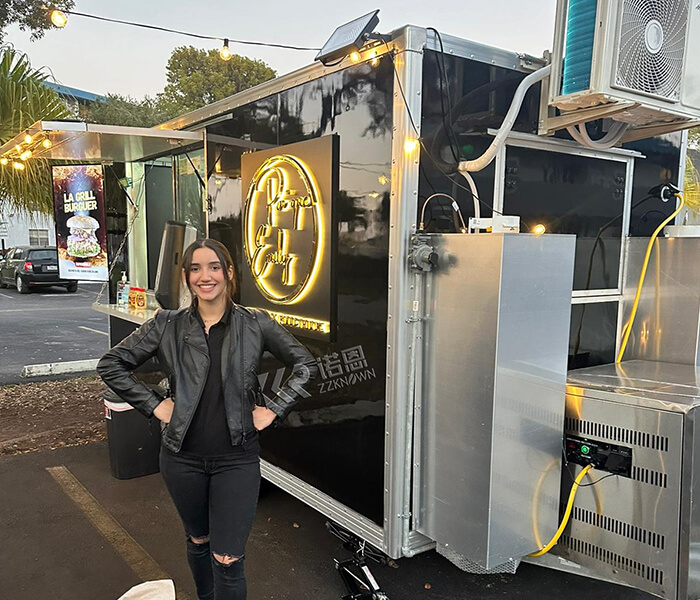
Operating a BBQ food truck involves strict adherence to a variety of health, safety, and legal regulations. Understanding and complying with these requirements is not only mandatory but also crucial for the safety of your customers and the longevity of your business.
The first and arguably most important step is to thoroughly research and understand the specific health and safety guidelines for mobile food vendors in your intended operating area. These regulations are typically set forth by your local health department and can vary significantly depending on your location. You will need to pay close attention to specific requirements concerning the safe storage temperatures for different types of food, proper food handling procedures to prevent contamination, the required sanitation standards for your truck and equipment, and the regulations governing wastewater and garbage disposal. It is imperative to ensure that your food truck's design and your choices of equipment are in full compliance with these local health department guidelines right from the outset. This proactive approach will be essential for successfully obtaining the necessary operating permits and licenses that will allow you to legally run your BBQ food truck business. Compliance with local health codes is not merely a legal obligation; it is a fundamental responsibility to your customers, ensuring their health and safety, and it is also vital for maintaining the positive reputation of your business. Failure to meet these standards can result in penalties ranging from hefty fines and temporary closures to the ultimate consequence of permanently losing your license to operate.
Given the inherent risks associated with high-heat cooking and the use of potentially flammable materials like propane in a BBQ food truck, implementing robust fire suppression and ventilation systems is absolutely non-negotiable. You will need to install a commercial-grade fire suppression system that is specifically designed for the unique environment of a food truck and that fully complies with all local fire safety regulations. This system typically includes strategically placed nozzles that can automatically discharge fire-suppressing agents in the event of a fire in the cooking area. Additionally, a properly designed and installed ventilation system is crucial. This system should include powerful exhaust hoods positioned directly above your primary cooking equipment, such as smokers and grills, to effectively remove smoke, grease-laden vapors, and cooking odors from the interior of the truck. Adequate ventilation not only ensures a safer working environment for your staff by improving air quality but also helps to maintain a more comfortable temperature inside the truck, especially during hot weather. It is essential to ensure that both your fire suppression and ventilation systems are regularly inspected and professionally maintained to guarantee their continued effectiveness in case of an emergency.
In many jurisdictions, operating a mobile food truck requires a formal relationship with a licensed commissary kitchen. A commissary is essentially a commercial kitchen facility that meets specific health and safety standards and serves as a base of operations for your food truck. The specific requirements for a commissary can vary by location, but they often include having suitable facilities for tasks such as bulk food preparation that might not be feasible within the limited space of your truck, thorough cleaning and sanitization of large equipment, and the proper disposal of grease and wastewater in accordance with environmental regulations. You will need to research the commissary requirements in your operating area and plan how you will utilize such a facility to support your daily food truck operations. This might involve preparing certain menu items in advance at the commissary, returning to the commissary at the end of each day for deep cleaning and restocking, and ensuring proper disposal of waste products. A commissary kitchen plays a vital role in supporting your food truck business by providing the necessary infrastructure to meet health and safety standards and efficiently manage essential tasks that are impractical or prohibited within the mobile unit itself. Many local authorities mandate the use of a licensed commissary to ensure that all food handling and sanitation practices meet the required levels for public safety.
Beyond the functional aspects of layout and equipment, the visual design and branding of your BBQ food truck play a critical role in attracting customers and building a loyal following. Your truck is essentially a mobile billboard, and its appearance can significantly influence potential customers' perceptions of your food and your business.
The foundation of your visual branding is a strong and cohesive brand identity. This starts with brainstorming a memorable and relevant name for your BBQ food truck that not only reflects the type of cuisine you offer but also resonates with your target audience. Next, you will need to design a visually appealing logo that is easily recognizable and effectively communicates the essence of your brand. This logo will be a cornerstone of all your branding efforts, appearing on your truck, menus, website, and social media. Selecting a consistent color palette that is both eye-catching and aligned with your brand's personality is also crucial. For example, you might choose warm, earthy tones to evoke a rustic BBQ feel, or bolder, brighter colors to convey a more energetic and contemporary vibe. A well-defined brand identity creates a strong and lasting impression on potential customers, making your food truck stand out in a crowded marketplace and helping to build brand recognition and trust over time.
Your BBQ food truck's exterior is your most powerful marketing tool, serving as a mobile advertisement that can attract attention wherever you go. Investing in a professional vehicle wrap or a high-quality paint job that prominently incorporates your logo, brand colors, and enticing, high-resolution images of your signature BBQ dishes is a worthwhile investment. Utilize creative and visually appealing graphics and typography to make your food truck stand out from the competition and be easily memorable. Consider strategically using exterior lighting, such as LED strip lights or spotlights, to enhance the visibility of your truck during evening hours and create a warm and inviting atmosphere that draws in potential customers. A visually striking and professionally executed exterior design conveys a sense of quality and professionalism, signaling to passersby that your BBQ is worth stopping for.
Once you have captured the attention of potential customers with your truck's exterior, your menu board is the next critical element in converting that interest into a sale. Design menu boards that are exceptionally easy to read from a reasonable distance, utilizing clear and legible font choices, ensuring an appropriate font size, and using high contrast between the text and the background. Organize your menu in a logical and intuitive manner, grouping similar items together under clear headings (e.g., "Smoked Meats," "Sides," "Drinks") and providing clear and accurate pricing information for each item. To further entice customers, consider incorporating high-quality photographs or professional illustrations of your most popular and visually appealing BBQ dishes to showcase your offerings and whet their appetites. You might also consider the use of digital menu boards, which offer the flexibility to easily update pricing, display daily specials or limited-time offers, and even incorporate dynamic content like short videos or promotional messages. A well-designed and informative menu board is essential for effectively communicating your offerings to your customers and ultimately influencing their purchasing decisions. A cluttered, poorly organized, or difficult-to-read menu can lead to customer confusion and potentially lost sales.
The food truck industry, like the broader culinary world, is constantly evolving. Staying abreast of current trends can provide a significant competitive edge for your BBQ food truck business.
A growing trend in the food industry is the emphasis on sustainability and eco-friendly practices. Consumers are increasingly conscious of their environmental impact, and BBQ food trucks can tap into this by implementing sustainable practices. This could include using biodegradable or compostable packaging and cutlery instead of single-use plastics. Exploring the feasibility of incorporating solar panels on your truck to power certain equipment, such as lighting or small appliances, can further reduce your environmental footprint. Highlighting any efforts you make to source your ingredients from local farms or suppliers who adhere to sustainable practices can also resonate positively with environmentally conscious customers. Embracing sustainability not only aligns with the values of a growing segment of the consumer market but can also lead to long-term cost savings and enhance your brand image as a responsible and forward-thinking business.
While traditional BBQ remains a beloved staple, there is a growing appetite for innovative and exciting flavor combinations. Consider experimenting with unique fusion cuisines that blend classic BBQ techniques with international culinary influences. For example, you might offer Korean BBQ tacos, BBQ pulled pork sliders with Asian-inspired slaw, or smoked brisket nachos with a spicy Latin twist. Introducing limited-time specialty items that showcase these fusion creations can generate buzz around your food truck and attract customers looking for something new and different. Offering innovative and unexpected BBQ fusion dishes can be a powerful way to differentiate your truck from competitors who might be focusing solely on more traditional BBQ fare, creating a unique selling proposition that attracts adventurous eaters.
Technology plays an increasingly important role in the food service industry, and BBQ food trucks can leverage it to enhance efficiency and customer experience. Implementing an easy-to-use online ordering system through your website or a popular third-party platform allows customers to conveniently place orders in advance for quick pickup or even delivery if your operational model supports it. Utilizing a modern mobile point-of-sale (POS) system is also crucial. A good POS system can handle various payment methods, including credit cards and contactless options like Apple Pay and Google Pay, and can also integrate with inventory management software to help you track stock levels and sales data. Consider using QR codes displayed on your truck or printed on your menus that customers can scan with their smartphones to access your online ordering platform, view your full menu with detailed descriptions and photos, or even connect with your social media pages. Integrating technology not only enhances convenience for your customers but also streamlines your order processing, reduces errors, and provides valuable data insights that can help you make informed decisions about your menu, pricing, and overall business strategy.
The perception of street food has shifted significantly in recent years. No longer solely associated with cheap and basic fare, there is a growing demand for unique and gourmet street food experiences. BBQ food trucks can capitalize on this trend by focusing on using high-quality, fresh ingredients, employing skilled cooking techniques, and paying close attention to the presentation of their dishes. Elevating your BBQ offerings beyond typical fast food by focusing on quality and unique flavor profiles can justify a slightly higher price point and attract customers who are willing to pay more for a premium experience. Ensuring that your dishes are visually appealing and "Instagrammable" can also be a powerful marketing tool, encouraging customers to share photos of your food on social media, thereby generating organic promotion for your business. Creating a memorable experience for your customers through exceptional food and friendly, efficient service will foster loyalty and encourage repeat business.
While BBQ is often seen as an indulgent cuisine, there is an increasing demand for healthier alternatives. Expanding your menu to include more health-conscious options can attract a broader customer base. This might involve offering leaner cuts of meat, providing lighter side dishes that incorporate fresh vegetables and whole grains, and even exploring plant-based BBQ alternatives for vegetarian and vegan customers. Clearly labeling menu items with nutritional information or highlighting healthier choices can also appeal to health-conscious individuals. Offering these options demonstrates that your BBQ food truck caters to a variety of dietary needs and preferences, potentially tapping into a significant and growing segment of the market.
Examining the layouts of successful BBQ food trucks can provide invaluable insights and practical guidance for designing your own mobile kitchen. While specific blueprints are often proprietary, we can analyze common design principles and key features that contribute to their efficiency and success.
Many successful BBQ food trucks, such as Kogi BBQ known for its Korean-Mexican fusion , often feature layouts that prioritize a smooth and logical flow from food preparation to serving. Kogi BBQ, for instance, likely has a versatile kitchen capable of handling both Korean and Mexican cooking techniques, with a layout that allows for efficient assembly of their popular fusion tacos. The Halal Guys, famous for their flavorful and quickly served chicken and rice platters , likely employ a layout optimized for high-volume preparation and fast customer service. Their success suggests a streamlined, assembly-line style approach within their truck. Cousins Maine Lobster, a nationwide brand known for its high-quality seafood , would necessitate a layout that includes specialized equipment for handling and preparing fresh lobster, potentially with designated areas for steaming or boiling. Ms. Cheezious, a Miami-based truck specializing in gourmet grilled cheese , undoubtedly features a prominent grill and cheese-melting station as central components of their layout, designed for efficient production of their signature sandwiches. By observing these examples, we can see that successful layouts are often tailored to the specific menu and operational needs of the business.
Several key design features consistently appear in successful BBQ food trucks. Strategic placement of the smoker or grill is paramount, considering factors like ventilation requirements, ease of access for loading and unloading wood or fuel, and proximity to the initial meat preparation area. Efficient organization of prep areas with easy access to both refrigerated storage for raw ingredients and cooking equipment is also crucial for minimizing staff movement and maximizing productivity. The design of the customer service window should facilitate clear communication between staff and customers and allow for efficient handoff of orders. Adequate space for staff to move comfortably within the often-confined interior of the truck is essential for preventing congestion and ensuring safety. Ultimately, the most successful layouts are those that are thoughtfully designed around the specific menu and cooking processes of the BBQ food truck, ensuring that every piece of equipment and every workstation is positioned to optimize the overall workflow.
The following table provides a comparative analysis of hypothetical BBQ food truck layouts, illustrating how design can vary based on size and menu focus:
| Food Truck Example | Size (Approx.) | Key Equipment Placement | Workflow Focus | Unique Layout Features |
|---|---|---|---|---|
| Hypothetical BBQ Truck A | Large (24-26 ft) | Large offset smoker at the rear, separate prep and serving areas | High-volume production of various smoked meats and a wide range of sides | Walk-in refrigerator unit, multiple serving windows to handle large crowds |
| Hypothetical BBQ Truck B | Medium (18-20 ft) | Vertical smoker centrally located, dedicated prep station, single service window | Efficient production of core BBQ items like pulled pork and ribs with standard sides | Ample dry storage for wood chips and supplies, clear line of sight from prep to serve |
| Hypothetical BBQ Truck C | Small (16 ft) | Compact pellet smoker, combined prep and serving counter | Streamlined operation for a limited menu, ideal for solo or duo operation | Fold-down prep tables to maximize workspace when needed, easily accessible POS system |
This table illustrates that the ideal layout is not one-size-fits-all but rather depends on the specific needs and goals of the BBQ food truck business. Larger trucks might prioritize high-volume production and a more extensive menu, while smaller trucks might focus on efficiency and a more limited offering.
Investing in a BBQ food truck is a significant undertaking, and considering options for customization and future adaptability is a wise approach.
The choice of vehicle platform for your BBQ food truck is a critical decision with long-term implications. Common options include step vans, which offer an integrated cab and cargo area, and trailers, which provide a separate cooking space that needs to be towed. Converted buses or even smaller, more agile carts can also be used depending on your specific needs and the scale of your operation. Each option presents its own set of advantages and disadvantages in terms of initial purchase cost, fuel efficiency, ongoing maintenance requirements, and the amount of interior space available for your mobile kitchen. For a BBQ business that may require a substantial smoker and significant storage, a larger trailer might offer the necessary space at a potentially lower initial cost compared to a similarly sized motorized truck. However, a trailer requires a separate vehicle capable of towing it, adding to the overall investment and operational complexity. A step van, on the other hand, provides an all-in-one solution with integrated mobility but might have higher fuel consumption and potentially more restrictive interior dimensions. Carefully weighing these factors based on your operational strategy and financial resources is essential.
For many aspiring BBQ food truck owners, partnering with experienced custom food truck manufacturers offers significant benefits. These specialized builders can tailor the entire design and layout of your mobile kitchen to your precise menu, specific equipment needs, and unique operational goals. They possess the expertise and knowledge to ensure that your truck is not only highly functional and efficient but also fully compliant with all relevant local health codes and fire safety regulations. When selecting a custom builder, it is crucial to choose a reputable company with a proven track record in the food truck industry, one that understands the specific demands of a BBQ operation and can guide you through the entire design and construction process. Experienced builders can offer valuable insights based on their work with other BBQ food truck businesses, helping you to avoid potential pitfalls and make informed decisions about layout, equipment placement, and material selection. Collaborating with a skilled custom builder ensures that your finished food truck is a high-quality, purpose-built vehicle designed to support the long-term success of your business.
As your BBQ food truck business evolves, your needs might change. Therefore, it is prudent to design your initial layout with potential future growth and adaptability in mind. This could involve leaving some open space within the truck that could accommodate additional equipment if you decide to expand your menu or increase your production capacity in the future. Choosing modular equipment units that can be easily reconfigured or moved around within the truck can also provide valuable flexibility. Selecting durable and versatile materials for the interior surfaces, such as stainless steel, will not only withstand the rigors of daily use in a busy kitchen environment but also be easy to clean and sanitize, contributing to the longevity of your investment. Planning for the future from the outset can save you significant time and money down the line if your BBQ food truck business experiences growth or if you decide to diversify your menu offerings to cater to a wider range of customer tastes. Incorporating this element of flexibility into your initial design can prevent the need for costly and time-consuming modifications or even the purchase of a new truck later on.
In conclusion, the layout and design of your BBQ food truck are not mere afterthoughts but rather critical determinants of its operational efficiency, customer appeal, and ultimately, its long-term business success. This report has explored the multifaceted aspects of BBQ food truck design, from the initial groundwork of defining your business and understanding your target market to the intricacies of optimizing the layout for a logical workflow and selecting the essential equipment. Navigating the regulatory landscape of health and safety requirements, strategically branding your mobile kitchen to attract and retain customers, and incorporating current industry trends are all vital components of creating a thriving BBQ food truck venture.
A well-designed food truck is far more than just a kitchen on wheels; it is a significant investment that, when planned thoughtfully and executed strategically, can yield substantial returns in terms of enhanced operational productivity, increased customer satisfaction, stronger brand loyalty, and ultimately, significant business growth. By prioritizing careful planning and making informed design choices, aspiring and current BBQ food truck entrepreneurs can set their mobile ventures up for lasting success in the dynamic and competitive mobile food market.
Contact our team of experienced food industry analysts and design consultants today for a personalized consultation. We can help you develop a custom layout and design that not only meets your specific needs and budget but also sets your BBQ food truck up for lasting success in the competitive mobile food market. Let's build your dream kitchen on wheels together!
